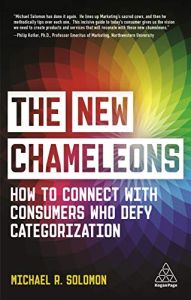Únase a getAbstract para acceder al resumen.

Únase a getAbstract para acceder al resumen.
Michael R. Solomon
The New Chameleons
How to Connect with Consumers Who Defy Categorization
Kogan Page, 2021
¿De qué se trata?
Companies and brands relying on outdated marketing segments will fail to cater to a new, category-defying wave of consumers.
Recommendation
Today’s consumers defy simple categorization, says marketing professor and consultant Michael R. Solomon, and marketers vested in binary thinking won’t appeal to them. Brands must undergo a mind-set shift and recognize the postmodern collapse of most of the rigid labels of the past; for example, they must recognize that, today, gender is fluid; perceived age eclipses real age; and the division between sellers and buyers is disappearing. Solomon guides marketers toward a more sophisticated, actionable understanding of identity construction and consumer behaviors in an increasingly complex world.
Summary
About the Author
Marketing professor with Saint Joseph’s University’s Haub School of Business Michael R. Solomon advises global brands, including Calvin Klein and Campbell’s.

















Comment on this summary